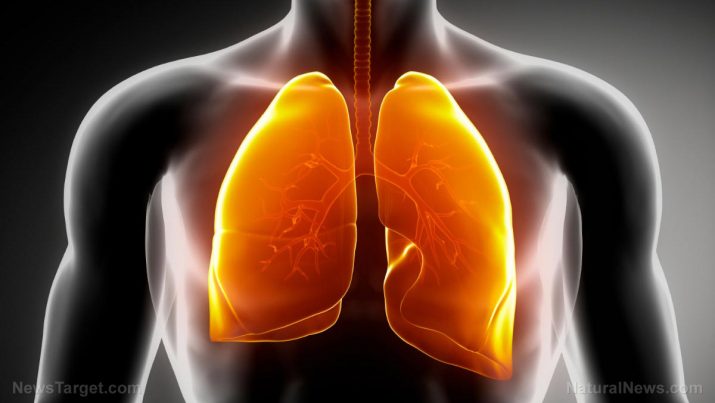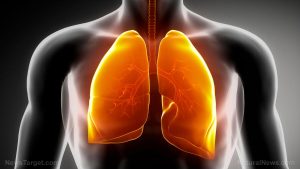
Blastomycosis – causes, side effects and treatments at NaturalPedia.com
Wednesday, January 17, 2018 by Zoey Sky
http://www.naturalpedia.com/blastomycosis-causes-side-effects-and-treatments-at-naturalpedia-com.html

Blastomycosis is a rare fungal infection caused by the fungus Blastomyces dermatitidis, which thrives in decomposing matter like leaves and wood or moist soil. It is a common infection among dogs, especially in areas where blastomycosis is widespread.
The infection mainly affects the lungs, and almost 50 percent of patients rarely experience or do not have any symptoms at all. The infection may spread to other parts of the body, but the skin is most commonly affected and is involved in at least 20 to 40 percent of recorded cases. Sometimes, patients with weakened immune systems can suffer from severe infections, especially in cases where it spreads from the lungs to other organs.

Known side effects of blastomycosis
Individuals can get blastomycosis once the microscopic and airborne fungal spores are inhaled. Infections often spread during activities that disturb the soil.
Humans and animals like dogs, rats, and cats may contract blastomycosis, but the disease is rarely transmitted from human-to-human or animal-to-human. In very rare cases, infection via the skin may occur.
Symptoms of blastomycosis may not manifest until three to four weeks after the fungus is inhaled. The mean time for symptoms to manifest is 45 days, or from 21 to 106 days.
Symptom patterns among patients with blastomycosis may include:
- Flu-like illness — Includes fever, chills, headache, and non-productive cough. Symptoms may remain undiagnosed and resolve within days even without treatment.
- Acute illness resembling bacterial pneumonia — Includes high fever, chills, productive cough, and chest pain. Sputum may turn yellowish brown.
- Chronic illness resembling tuberculosis or lung cancer — Includes low-grade fever, productive cough, night sweats, and weight loss. Sputum may turn yellowish brown or contain blood.
- Fast, progressive, and severe symptoms similar to acute respiratory distress syndrome (ARDS) — Includes high fever, shortness of breath, and rapid breathing.
Body systems harmed by blastomycosis
When a patient, especially one with a weakened immune system, has severe blastomycosis, the infection can spread from the lungs to other parts of the body like the skin, bones and joints, and the central nervous system (CNS), or to the brain and the spinal cord.
Food items or nutrients that may prevent blastomycosis
Incorporating the following foods or nutrients may help prevent blastomycosis and other infections:
- Coconut — One of the best anti-microbial foods, coconuts are also full of lauric acid and caprylic acid. Both acids can help fight candida yeast in the body, which is normally present in the digestive system. However, when candida yeast grows rapidly, it can cause symptoms like a rash or breakout, an itch, chronic fatigue, sugary cravings, and even moodiness and depression.
- Garlic — Fresh garlic is a bacteria-fighting food and it contains vitamin B6 and potassium. Garlic detoxifies the body, boosts immunity, strengthens the liver, and promotes a healthy heart. Garlic specifically fights bacteria in the digestive tract and can help build good bacteria because it’s a natural prebiotic food.
- Oregano — Oregano can help fight bacteria in the body, strengthen the immune system, and even reduce stress caused by high levels of vitamin B6. Oregano is also a natural source of chlorophyll that also fights bacteria and acidity.
- Pumpkin seeds — Pumpkin seeds can help fight parasites, and they contain properties that bind to the latter, making them easier to excrete via the digestive tract. Pumpkin seeds are also full of plant-based protein
- Onions — Onions are good for the liver and heart. This vegetable can help fight bacterial growth, and it is good for treating a mild cold or a fungal infection. Onions are high in immune-boosting properties, and they’re full of vitamin C, vitamin B6, antioxidants, and potassium.
Treatments, management plans for blastomycosis
Individuals infected with blastomycosis confined to the lungs and who are not suffering from severe symptoms often don’t require treatment. Symptoms of the infection are often self-limiting, and the infection clears spontaneously. Take note that treatments must be used if the infection in the lung worsens. When the infection spreads to the skin, spontaneous resolution isn’t possible and treatment is required.
Itraconazole given orally is the suggested drug for mild-to-moderate disease involving the lungs or in disease involving other organs. Amphotericin B via intravenous administration is the suggested drug for severe or life-threatening blastomycosis (e.g. ARDS, CNS involvement, and immunocompromised patients).
Patients with blastomycosis who have limited skin lesions and relatively mild lung involvement often recover completely. However, when left untreated, severe cases of blastomycosis can cause severe scarring and disfigurement or even death.
Where to learn more
- Baking soda, cancer and fungus
- Cure fungal infections naturally
- Hospitals in New York State are witnessing a deadly drug resistant fungal infection outbreak
- Scientists try to develop frog vaccine while ignoring the pesticides that are harming their immunity
- Study finds exposure to herbicide increases frogs’ risk of death from fungal infection
Summary
Blastomycosis is a rare fungal infection caused by the fungus Blastomyces dermatitidis, which thrives in decomposing matter or moist soil.
Individuals can get blastomycosis once the microscopic and airborne fungal spores are inhaled.
Individuals infected with blastomycosis confined to the lungs and who are not suffering from severe symptoms often don’t require treatment. Symptoms of the infection are often self-limiting, and the infection clears spontaneously. Take note that treatments must be used if the infection in the lung worsens.
Sources include
Tagged Under: Tags: blastomycosis





